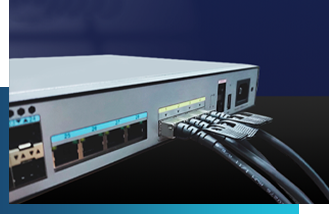
The SFP28, standing for Small Form-factor Pluggable 28 Gigabit, is a hot-swappable optical transceiver module used for high-speed data transmission in networking applications. This guide explores everything you need to know about SFP28 transceivers, including their types, features, applications, and selection factors.
Data Rate: Supports 25 Gigabit Ethernet (25GbE) data transmission, potentially reaching up to 28Gbps.
Form Factor: Compact and modular, allowing for easy installation and replacement.
Hot-Swappable: Enables adding or removing modules without powering down equipment, minimizing downtime.
Multiple Types: Available in various types with different transmission distances and wavelengths, catering to diverse network needs.
Cost-Effective: Compared to higher-speed options, SFP28 offers a more economical solution for shorter-reach applications.
SFP28 transceiver comes in various flavors, each suited for different applications and network requirements. Here's a breakdown of the most common types:
SFP28 SR (Short Reach): Ideal for intra-datacenter connections over multimode fiber with a reach of up to 100 meters and wavelength of 850nm. This is the most widely used type due to its affordability and suitability for short distances.
SFP28 LR (Long Reach): Designed for longer distances on single-mode fiber, supporting up to 10km with a wavelength of 1310nm. Commonly used for data center interconnect (DCI) and other longer-range applications.
SFP28 ER (Extended Reach): Offers even longer reach, extending up to 40km on single-mode fiber with 1310nm wavelength. Suitable for demanding DCI deployments requiring high bandwidth over extended distances.
SFP28 BiDi (Bidirectional): Utilizes a single fiber strand for both transmitting and receiving data, maximizing fiber utilization and potentially reducing costs. Useful for specific applications where fiber count is limited.
SFP28 CWDM4 (Coarse Wavelength Division Multiplexing): Multiplexes four 25Gb/s signals onto different wavelengths within a single fiber, enabling 100GbE transmission. Ideal for high-density networks requiring maximum bandwidth over existing infrastructure.
SFP28 10/25G-CSR: Dual-rate transceiver supporting both 10GbE and 25GbE, offering flexibility for networks undergoing upgrades or with mixed-speed requirements.
Compatibility: Ensure the chosen SFP28 transceiver is compatible with your network equipment and infrastructure, including fiber type, wavelength, and protocols.
Power Consumption: Consider the power consumption of the transceiver, especially in high-density environments where thermal management is critical.
Brand and Warranty: Choose a reputable brand offering reliable modules with a suitable warranty period.
Intra-datacenter connectivity: SFP28 SR modules are commonly used for short-range connections within a data center, linking switches, servers, and storage devices. Their hot-swappable nature facilitates easy maintenance and upgrades.
High-performance computing (HPC): Interconnecting HPC clusters for parallel processing applications requires high bandwidth, which SFP28 modules can provide efficiently.
Cloud infrastructure: Building high-speed connections within and between cloud data centers for workload distribution and resource sharing relies heavily on SFP28 transceivers.
Network backbone upgrades: Modernizing enterprise network backbones for bandwidth-intensive applications like video conferencing, collaboration tools, and large file transfers often involves deploying SFP28 modules.
Campus network connectivity: Connecting buildings and campuses within an organization's network can be achieved cost-effectively using SFP28 SR or LR modules, depending on the distances involved.
Metro and access network upgrades: Upgrading metro and access networks for mobile backhaul and broadband internet access usually involves incorporating SFP28 modules, particularly SR or LR versions depending on reach requirements.
Mobile edge computing (MEC): Deploying MEC applications closer to the network edge for faster response times often utilizes SFP28 modules for high-bandwidth connectivity.
Research and Education Networks: High-speed data transfer for scientific collaborations and data analysis in research and education networks can be facilitated by SFP28 transceivers.
Financial Institutions: Handling demanding transaction processing needs in financial institutions often involves utilizing SFP28 modules for reliable and high-speed data connectivity.
Healthcare Networks: Fast and reliable data access for medical imaging and patient records in healthcare networks can be achieved through SFP28 deployments.
Transmission distance: Match the module's reach (SR, LR, or ER) to your link length requirements.
Fiber type: Ensure compatibility with your network's fiber type (multimode or single-mode).
Cost and power consumption: Balance cost with power efficiency, especially in high-density environments.
Specific features: Depending on your application, features like BiDi or CWDM4 might be relevant.
Transmission Distance: Select a module based on the required link length (e.g., SR for intra-datacenter, LR/ER for DCI).
Fiber Type: Match the transceiver with the type of fiber used in your network (multimode or single-mode).
Wavelength: Ensure compatibility with your network equipment and existing infrastructure.
Power Consumption: Consider power requirements and thermal constraints, especially in high-density environments.
Brand and Warranty: Choose a reputable brand offering reliable modules with a suitable warranty period.
By understanding these factors and selecting the appropriate SFP28 transceiver, you can optimize your network performance, bandwidth, and cost-efficiency for various applications.
